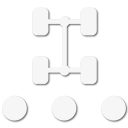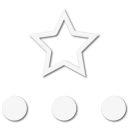I had an Idea I want to put past you (Think Tank Moment)
I was thinking of ways of engaging people and having a way to teach important skills. I thought of an overland orientation course which could be used as a competition as well when needed.
Executive Summary
Orientation via GPS has caused the decline in the need to have map reading skills. GPS is here to say so we need to think of a way to use it as a tool. This suggestion will identify how we could use GPS, Map reading, Compass skills and a bit of physical exercise to get to the destination to obtain a result.
The concept
If OB sponsor this through the forestry/nature commission body of that area. It could be a tourist thing where funds could be obtained.
The Pole markers could be just a normal wooden pole with a metal engraved plate. each plate would be for a specific route which include the Route Number (NAME) Pole ID number, long and lat to the next location
The poles would be in the local area 3- 5 KM of something nice or special to be a tourist but, would not be at the location, that would make it too easy.
On the Pole on the opposite side from the long and lat directions would be a message that would need to be photographed with yourself to prove your completion of the task
Route types
all routes would be kept restricted to the organisation body and route tracking and publishing the routes tacks is discouraged to keep the excitement of the mystery alive.
let me know what you think
I was thinking of ways of engaging people and having a way to teach important skills. I thought of an overland orientation course which could be used as a competition as well when needed.
Executive Summary
Orientation via GPS has caused the decline in the need to have map reading skills. GPS is here to say so we need to think of a way to use it as a tool. This suggestion will identify how we could use GPS, Map reading, Compass skills and a bit of physical exercise to get to the destination to obtain a result.
The concept
- Pick an Area/Region like a national park, recreation area, city, province, state.
- Have three levels of tools required, GPS (SUV, Car, Motorcycle), MAP/Compass (Motorcycle, ATV, HIking, Walking) & Visual recognition (Walking, Hiking)
- Different transport possibility types for each stage.
- Stage 1 Major road (metalled/paved/sealed road) (Highway/Motorway/Autobahn/snelweg) - Long distances - Cars, Trucks, Campers, SUV, Motorcycle
- Stage 2 Minor roads (Gravel roads) (C-class/Range/ Forestry Trunk roads) - Last mile - Long distances - Cars, Trucks, Campers, SUV, Motorcycle
- Stage 3 Tracks or trails ( NON gravel,metalled/paved/sealed road) Localised - ATV, Motorcycle, Mountain Bike, Horse, Hiking, walking
- Stage 4 Visual acuity walking path ( mud, grass) - Personal Area - Walking, Hiking, Mountain bike, horse
- Direction and Navigation
- Stage 1 - GPS (Log and Lat)
- Stage 2 - GPS and Trail maps (Long and Lat)
- Stage 3 - Maps or GPS once converted to Long and Lat (4 figure map reading map grid scale)
- Stage 4 - Map and Compass ( 8 figure map location with Compass Direction)
- Once at destination you would need to identify your route number on the Pole marker (all Pole markers will be part of multiple routes so will have multiple routes and next destination long and lat numbers
- This would be repeated for x amount of destinations before it is over
- Routes would have 5, 10, 15, 20 destinations in the route until the last location,
- The amount of stops in a route is determined by how many days or total distance you would like to do.
If OB sponsor this through the forestry/nature commission body of that area. It could be a tourist thing where funds could be obtained.
The Pole markers could be just a normal wooden pole with a metal engraved plate. each plate would be for a specific route which include the Route Number (NAME) Pole ID number, long and lat to the next location
The poles would be in the local area 3- 5 KM of something nice or special to be a tourist but, would not be at the location, that would make it too easy.
On the Pole on the opposite side from the long and lat directions would be a message that would need to be photographed with yourself to prove your completion of the task
Route types
- Day Route - all poles are with in an area that could be done in a day
- Weekend Route - All poles would be in an area which should only take 1 sleep over day
- Long Weekend / Bank Holiday route - the area should large enough for 2 days sleep over
- long Route - a route is a route that may be local or larger that could use specific poles in different local areas. single poles which are already being used in other routes could be used to build a route of much larger areas. e.g.
- Pole 1 = Pole 3 from route CAN-AB-Banff route 15,
- Pole 2 = Pole 5 from route CAN-AB-Jasper route 04
- Pole 3 = Pole 12 from Route CAN-BC-Kimberly route 1
- Pole 4 = Pole 5 from Route USA-WA-Tiger route 4
- etc.
This route would be filled with as many poles that would be determined to take upto a predetermined amount of days for that route
all routes would be kept restricted to the organisation body and route tracking and publishing the routes tacks is discouraged to keep the excitement of the mystery alive.
let me know what you think








